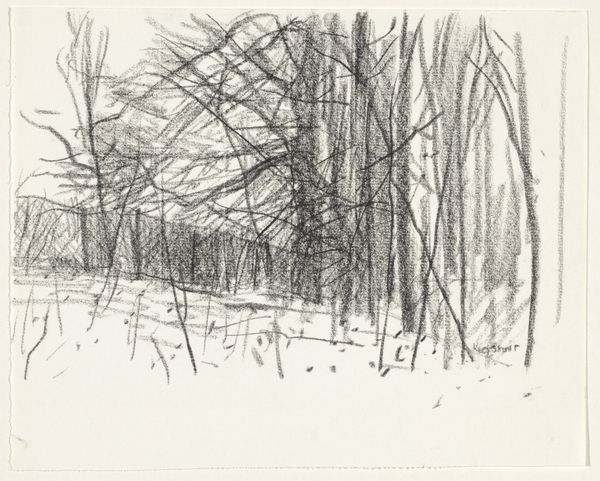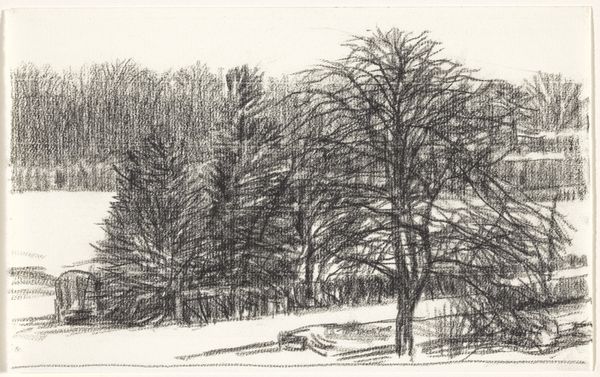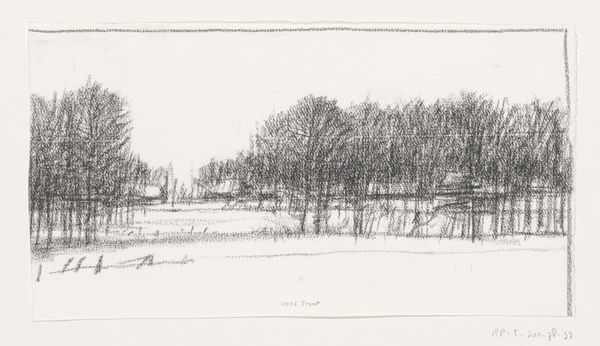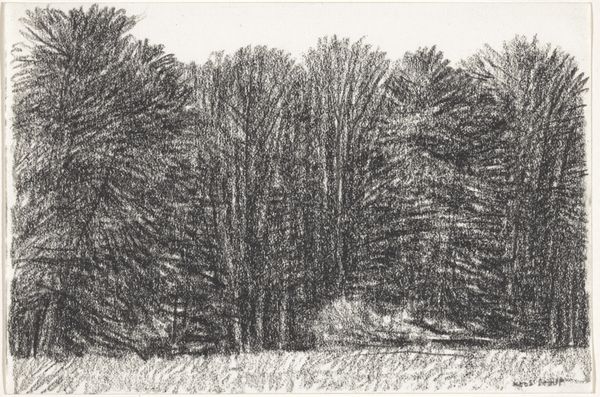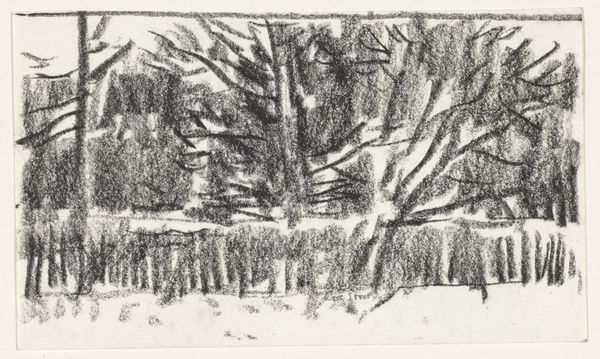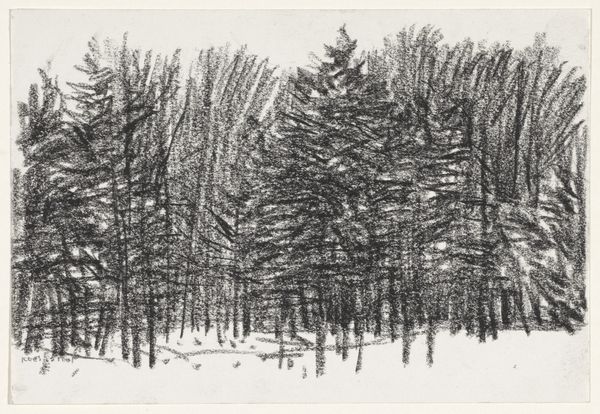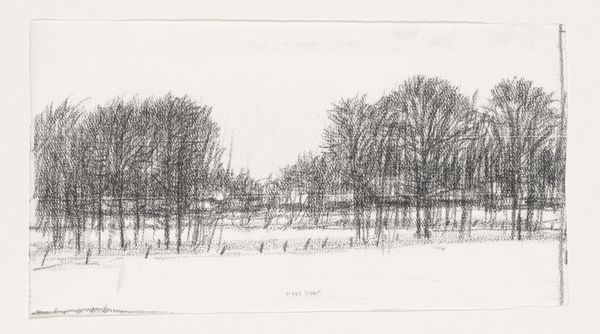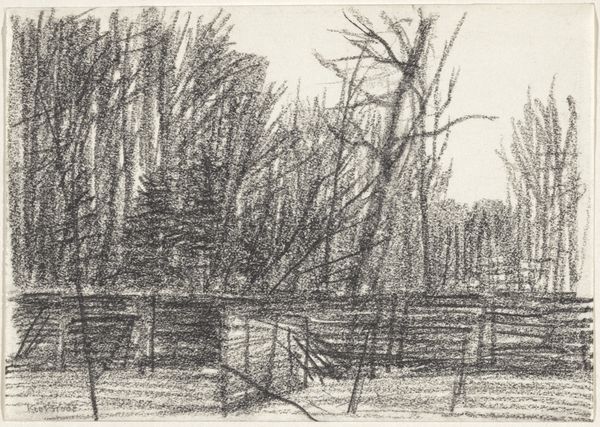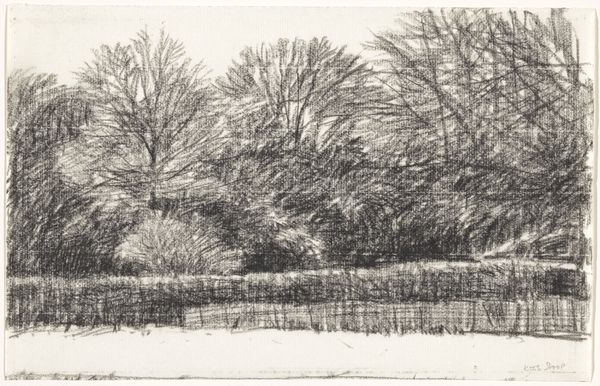
drawing, charcoal
#
drawing
#
landscape
#
etching
#
line
#
charcoal
#
realism
Dimensions: height 141 mm, width 239 mm
Copyright: Rijks Museum: Open Domain
Editor: We're looking at Kees Stoop's "Bomenrij zonder blad," a charcoal and drawing from 1939 to 2009, now residing at the Rijksmuseum. It strikes me as quite stark, almost melancholic with the bare trees rendered in such detail. How do you interpret this work? Curator: Well, considering Stoop's lifetime spanned immense social and political upheaval, this landscape becomes charged. The starkness you noted can be read as a metaphor for loss, for the stripping away of not just leaves but also societal structures and certainties. Editor: So, the barrenness is a kind of social commentary? Curator: Potentially. The landscape genre has often been used to reflect a nation’s identity. But what happens when that identity is fractured or threatened? Do you notice the specific way the trees are drawn, almost skeletal? What could that signify? Editor: A fragility, perhaps? A reminder of the impermanence of things? I didn't initially see that commentary. Curator: Precisely. And given Stoop's working period, understanding the socio-political climate is essential. How does art both reflect and resist the dominant ideologies of its time? It raises fascinating questions. Editor: It’s making me think about how even seemingly simple landscape drawings can carry such complex, layered meanings relating to that era and how artists navigate times of political tension. Curator: Exactly. We must question whose narratives are centered, whose are erased. Every artistic decision has resonance, inviting us to challenge and reconsider the dominant order. Editor: I'll never look at a landscape the same way again! Thanks. Curator: Indeed! Art should always be a starting point for critical engagement.
Comments
No comments
Be the first to comment and join the conversation on the ultimate creative platform.
